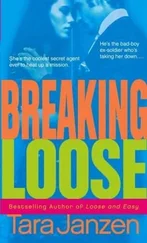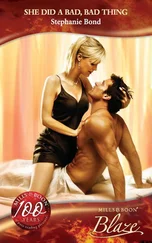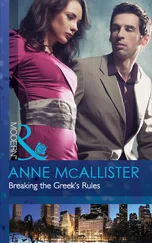The cinema of Joel and Ethan Coen is a prominent source for Vince Gilligan and his team of writers and directors. [27] Read this extract from a 2011 interview where Vincent Gilligan declares: “Film noir is a big influence: the classic noirs—I could watch The Maltese Falcon once a month, probably—as well as the Coen brothers contemporary ones as well” ( http://blogs.amctv.com/breaking-bad/2011/10/vince-gilligan-interview.php ).
The title of “No-Rough-Stuff-Type Deal” (3/9/08) explicitly quotes a dialogue from Fargo (1996). In both Fargo and Breaking Bad an illegal but supposedly “simple” activity (a staged kidnapping and drug manufacturing) becomes very complicated because of the problems with controlling the complexity of reality—call it causality, theory of chaos, butterfly effect, or principle of uncertainty.
A Serious Man (2009), possibly one of the Coen brothers’ most intense films, opens with a prologue. We are in a shtetl in Eastern Europe. One night a Jewish couple, husband and wife, is visited by a man, apparently an elderly man who had died three years before. The wife says he is a dybbuk , an evil spirit who possesses the dead person’s body. The old man laughs at this idea, claiming to be through all evidence alive. The woman does not believe him. She stabs him in the chest. He does not seem to bleed initially but soon his shirt is covered with red. Was he really a ghostly presence? Did he deserve to be stabbed or did he just need help? Was he alive or dead? The “dybbuk” stumbles out in the dark and snow, leaving the couple and the viewers in the most total uncertainty about who he was for real. A Serious Man tells the story of a physics university professor, Larry Gopnik, who teaches his class the Heisenberg principle, whose mathematical explanation covers an enormous blackboard. “[The principle] proves that we can’t ever know what’s going on…. But even if you can’t figure anything out, you’re still responsible for this on the midterm!” At the beginning of the film, Clive, a student of Korean origin, visits Professor Gopnik to claim that the failing grade he had received was “unjust… I understand the physics. I understand the dead cat.” Larry replies ,“Even I don’t understand the dead cat. The math is how it really works.” Clive implores the professor to give him a passing grade or the possibility of taking the midterm again, but Larry refuses. When the student leaves, Larry finds an envelope with a bundle of money on his desk, a blatant attempt to bribe him. He confronts Clive again, telling him that his attempt of corruption will have severe consequences. Clive replies that his interpretation of the situation is “mere surmise, very uncertain.” Later, at home, Gopnik receives the visit of the Korean student’s father, who threatens to sue him either for falsely accusing his son to have left the money on his desk or for having taken that money. Gopnik replies, “It doesn’t make sense. Either he left the money or he didn’t.” Mr. Park’s memorable answer is, “Please. Accept the mystery.”
Even if it is difficult (and possibly unnecessary) to tell exactly if A Serious Man has a direct influence on the development of Breaking Bad ’s plot, [28] The date of release of A Serious Man , September 2009, is six months earlier than the broadcast of season three.
this scene certainly offers a lens to interpret the series. More than judging upon good and evil, taking pro- or anti-Walt positions, identifying with him or not, Breaking Bad suggests to “accept the mystery.” The use of Heisenberg’s name makes particular sense here, being that uncertainty is the most prominent trait of the series. Most of its characters are schizophrenic, in a sort of global generalization of Schrödinger’s cat’s paradox to all society. Walter is a teacher and a meth producer, Fring a fast-food owner and a drug lord, Marie a cop’s wife and a kleptomaniac, Saul a lawyer and a criminals’ accomplice, Skyler a mother and a manager of a money-laundering business. As Telotte (1995, 160) writes about Twin Peaks , “the order of our world begins to show just how threadbare and fragile it really is, while the signs that sustain that order, including the various codes of the television narrative, reveal a sense of meaninglessness or blankness that also haunts our world.”
Most TV series base their success on uncertainty, on the addiction created by not knowing “what will happen next,” on the suspension (institutionalized by the rhetoric device of cliffhanger) that makes you long for the following episode. Breaking Bad takes this concept a step further, structuring the whole plot around Heisenberg’s name and embodying his principle in some way. Schrödinger’s cat mental experiment insists on the superposition of two states, life and death. After his cancer diagnosis, Walter White enters exactly into this suspended contingency—alive and dead at the same time. As the Mexican band sings in a music video in “Negro y Azul” (2.7), “Ese compa ya esta muerto/No más no le han avisado” (that dude is already dead, he hasn’t been told yet). In this condition, Walter White acts like a rational-minded scientist who moves in irrational ways, driven by amoral familism and hubris, under the rule of the most fundamental “uncertainty,” the one about our own mortality.
Agamben, Giorgio. The Open. Man and Animal . Stanford: Stanford University Press, 2004.
Banfield, Edward C. The Moral Basis of a Backward Society . Glencoe: The Free Press, 1958.
Brodesco, Alberto. Una voce nel disastro. L’immagine dello scienziato nel cinema dell’emergenza . Roma: Meltemi, 2008.
———. “Tecnoscienza e serialità televisiva. Una mappatura.” Annuario scienza e società 2013 . Eds. Federico Neresini and Andrea Lorenzet. Bologna: il Mulino, 2013.
Brubaker, Rogers. The Limits of Rationality. An Essay on the Social and Moral Thought of Max Weber . London-New York: Routledge, 1984.
Bruce, Colin. Schrödinger’s Rabbits. The Many Worlds of Quantum . Washington: Joseph Henry Press, 2004.
Cassidy, David C. Beyond Unncertainty. Heisenberg, Quantum Physics, and the Bomb . New York: Bellevue Literary Press, 2009.
Coco, Attilio. “Le serie tv e l’esperienza del transito.” Segnocinema 142.
Di Chio, Federico. 2011. L’illusione difficile. Cinema e serie tv nell’età della disillusione . Milano: Bompiani, 2006. 24-27.
Elsaesser, Thomas. “The Mind Game Film.” In Puzzle Films: Complex Storytelling in Contemporary Cinema, edited by Warren Buckland. 13-41. Malden-Oxford: Wiley- Blackwell, 2009.
Frayn, Michael. Copenhagen. London: Methuen Drama, 1998.
Frayling, Christopher. Mad, Bad and Dangerous? The Scientist and the Cinema . London: Reaktion Books, 2005.
Gilmore, Robert. Alice in Quantum Land. An Allegory of Quantum Physics . New York: Springer-Verlag, 1995.
Heisenberg, Werner. Physics and Philosophy. The Revolution in Modern Science . London: Penguin Books, 2000.
Horkheimer, Max, and Theodor W. Adorno. Dialectic of Enlightenment, Philosophical Fragments . Stanford: Stanford University Press, 2002.
Jost, François. De quoi les séries américaines sont-elles le symptôme? . Paris: CNRS Editions, 2011.
Keopesell, David R., and Robert Arp. “A Fine Meth We’ve Gotten Into.” In Breaking Bad and Philosophy. Badder Living through Chemistry, edited by David R. Keopesell and Robert Arp. vii-ix. Chicago-LaSalle: Open Court, 2012.
Читать дальше












